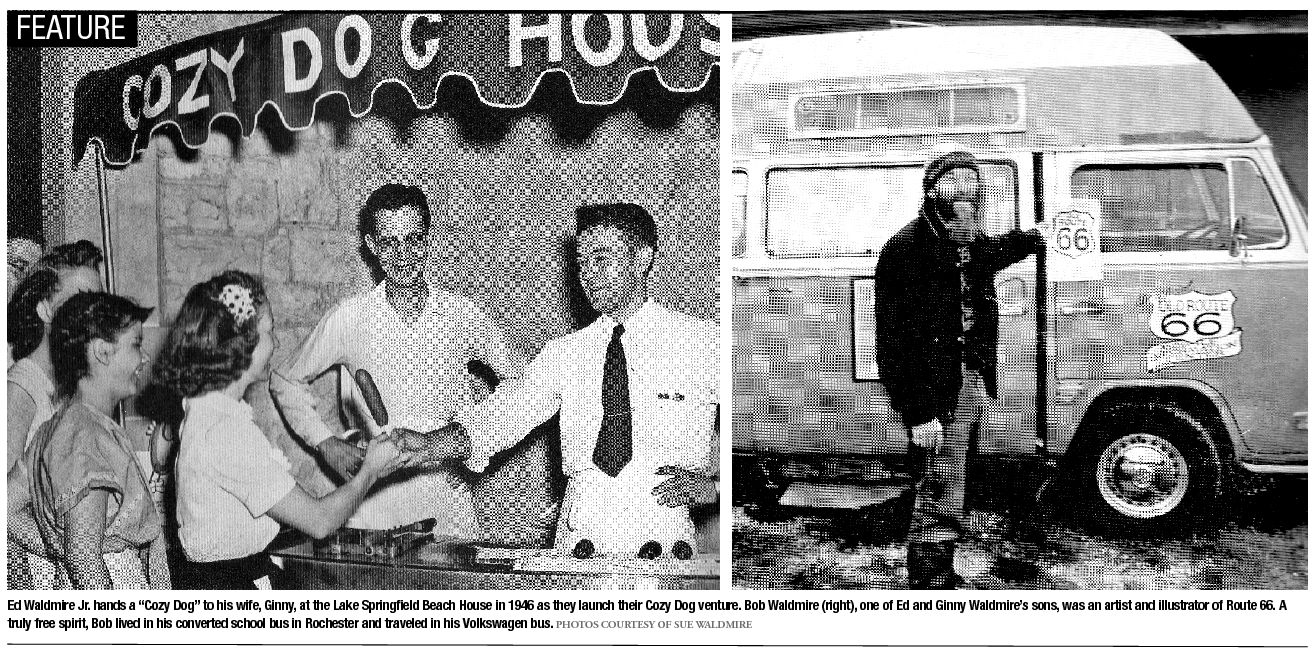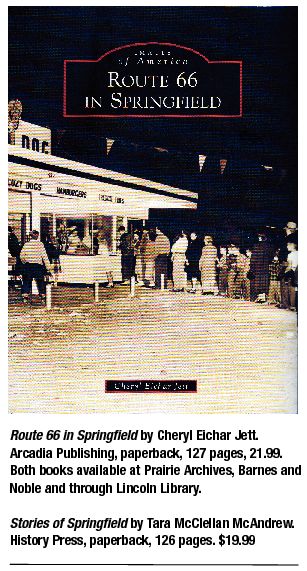
Get your kicks... on Springfield Stories and Route 66
BOOK REVIEW | Corrine Frisch
When people think of Springfield history their minds usually turn to its favorite son. Thousands of books have been written about Abraham Lincoln, but there is much capital city lore to be brought to light outside Lincoln’s shadow. Two new books reveal stories and images of our city’s past that readers, especially Springfield natives, will enjoy.
The first is Tara McClellan McAndrew’s Stories of Springfield, part of History Press’ American Chronicle series. While McAndrew, who writes a local history column for Illinois Times, devotes one of her six chapters to our 16th president, the reader may find the stories of the city’s lesser known luminaries even more enlightening given their uniqueness.
The author has gathered her stories using various sources but acknowledges the treasure that is the Sangamon Valley Collection at Lincoln Library, Springfield’s public library. Many may not realize that our town was first named Calhoun by Elijah Iles and others who drew up the original plat maps, or that the Illinois State Fair used to be held in October (it certainly would have been cooler). We all know where the Armory stands at Second and Capitol streets, but prior to its construction there stood the Arsenal, a castle-like structure built in 1903 that was burnt to the ground in 1934 by a 10-year-old arsonist.
Springfield has had its store of scoundrels and rogues. The author gives us glimpses of several miscreants “behaving badly.” One serious instance of this behavior was the 1908 Race Riot, sparked when a white woman falsely accused of black man of molesting her. Not all of Springfield’s African American history was so sad. Several blacks were business owners and many brave souls worked for the Underground Railroad, helping southern slaves gain their freedom.
These days folks gather on the Capitol lawn to view Fourth of July fireworks. But on March 21, 1843, dozens of “Millerites” gathered near there, dressed in angel-like white robes to await the second coming of Jesus. When he hadn’t arrived by sundown they went home, to their “great disappointment.” Readers, however will not be disappointed in this fresh look at some little known tales of Springfield’s early days.
And now, ladies and gentlemen, start your engines – not for a race, but for a leisurely drive into Springfield’s past via her very own piece of the “mother road.” Cheryl Eicher Jett has compiled a photographic history of the sights travelers would see and enjoy on their way north, south, east or west through Illinois’ capital city.
The trip begins in 1926. Springfield’s 65,000 people were typical of their time – many of them owned one of the million-plus automobiles Henry Ford had sold by then. And unlike Back to the Future’s DeLorean, these wheels needed roads. Enter the $75 million to build, among other routes, a road from Chicago to St. Louis. Jett’s’ Route 66 in Springfield, one of Arcadia Press’ Images of America series, serves as road map to the three different alignments Route 66 took through town, 1926-30, 1930-40 and 1940-77.
The first route was the most direct. It rolled into town past what is now Carpenter Park, then curved around the fairgrounds on Taintor Rd., south on Fifth St. past Lincoln Park to North Grand Ave. where it turned right for three blocks before turning south on 2nd St. to take drivers through town past the Capitol building, then west on South Grand to West Grand (now MacArthur Blvd.) around the Wabash curve and out of town. In 1930 the route changed and became known as “City 66.” Instead of going around the fairgrounds it skirted it on Peoria Rd. onto Ninth St. all the way to where Laurel ends, then west to Sixth St. and south out of town. In 1940, the road became “Bypass 66.” From Peoria Rd. one drove south on 31st St. (later Dirksen Parkway) past Bergen Park, The Springfield Drive-Inn, then west on Linn St. (now Stevenson Drive) then merged into the new Interstate 55.
As someone who grew up in Springfield, I viewed these photos as one would pictures of old friends – some long-gone, some well kept and some showing their age. The parks, motels, restaurants, businesses and government buildings that were seen through car windows will seem like “this-is-your-life” moments to many readers. While most of the eateries and businesses were familiar to me, I was surprised at the number of motels (the name coined to mean “motor hotels”) that once sat along the route. And finally I felt a strange rumbling. I realized I was hungry for a Cozy Dog.
Contact Corrine Frisch at [email protected].